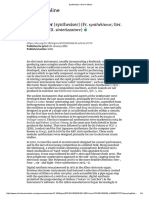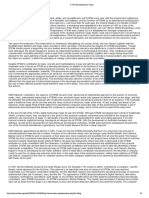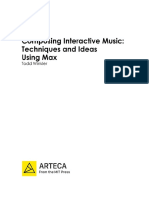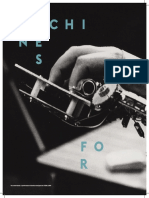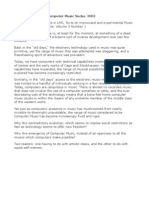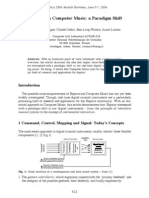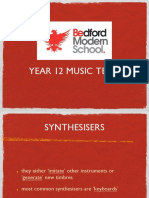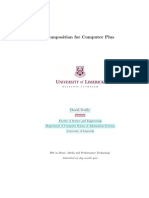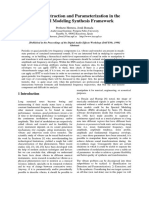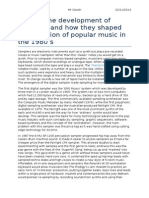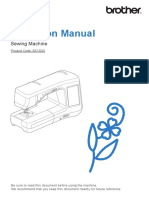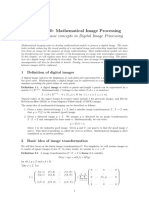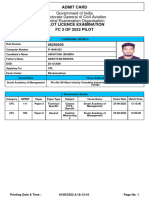0% found this document useful (0 votes)
114 views4 pagesSamplers Lecture
The first digital sampler was the EMS Musys system developed in 1969 in London. It used two PDP-8 mini computers with 12k of memory and tape storage to control the world's first digital studio.
The 1976 Computer Music Melodian was based on a PDP-8 with then high resolution of 12-bit/22kHz sampling. It was monophonic and used by Stevie Wonder.
The 1979 Fairlight CMI was the first commercially available digital sampling instrument. It sampled at 8-bits and 10kHz and had keyboards, a video display, and light pen for sound editing. It helped establish sampling as a studio tool.
Uploaded by
bradCopyright
© © All Rights Reserved
We take content rights seriously. If you suspect this is your content, claim it here.
Available Formats
Download as ODT, PDF, TXT or read online on Scribd
0% found this document useful (0 votes)
114 views4 pagesSamplers Lecture
The first digital sampler was the EMS Musys system developed in 1969 in London. It used two PDP-8 mini computers with 12k of memory and tape storage to control the world's first digital studio.
The 1976 Computer Music Melodian was based on a PDP-8 with then high resolution of 12-bit/22kHz sampling. It was monophonic and used by Stevie Wonder.
The 1979 Fairlight CMI was the first commercially available digital sampling instrument. It sampled at 8-bits and 10kHz and had keyboards, a video display, and light pen for sound editing. It helped establish sampling as a studio tool.
Uploaded by
bradCopyright
© © All Rights Reserved
We take content rights seriously. If you suspect this is your content, claim it here.
Available Formats
Download as ODT, PDF, TXT or read online on Scribd
/ 4
